IASbaba's Daily Current Affairs Analysis
Archives
(PRELIMS & MAINS Focus)
Syllabus
- Prelims – Environment
Context: Recently Himalayan Griffon vulture was rescued from the Eidgah cemetery in Kanpur.
About Himalayan Vulture:

- Scientific Name: Gyps himalayensis
- It is a rare and largest bird native to the Himalayas
- Habitat:
- It lives mainly in the higher regions of the Himalayas and the Tibetan Plateau at the elevation of above 1500 metres.
- This species is distributed from western China, Kazakhstan, Uzbekistan, Kyrgyzstan, Tajikistan, Afghanistan and Pakistan, east through the Himalayan mountain range in India, Nepal and Bhutan, to central China and Mongolia.
- Description:
- This is a huge vulture and the adult is sandy brown with a pale, featherless head. When in flight, the bird has black primaries and a small-headed, squared-winged appearance.
- Usually seen singly or in small groups; gathers in large flocks at a carcass
- Conservation status :
- The vulture is listed as “Near Threatened” by the International Union for Conservation of Nature (IUCN) Red List of Threatened Species.
- The species is covered by a Multi-species Action Plan (MsAP) for the conservation of African-Eurasian vultures and by national Action Plans in India , Bangladesh, Nepal and Cambodia.
- Threats:
- The most serious potential threat to this species is thought to be mortality caused through ingestion of diclofenac and other vulture-toxic non-steroidal anti-inflammatory drugs (NSAIDs) widely used in livestock, particularly in South Asia.
Source: Indian Express
Previous Year Questions
Q.1) Which of the following is not a bird? (2022)
- Golden Mahseer
- Indian Nightjar
- Spoonbill
- White Ibis
Q.2) Consider the following animals
- Hedgehog
- Marmot
- Pangolin
To reduce the chance of being captured by predators, which of the above organisms rolls up/roll up and protects/protect its/their vulnerable parts? (2021)
- 1 and 2
- 2 only
- 3 only
- 1 and 3
Syllabus
- Prelims – Governance
Context: The governments of India and the U.K. marked Pravasi Bharatiya Divas on January 9 by kicking off the Young Professionals Scheme, which will permit up to 3,000 of their degree-holding citizens aged between 18 and 30 to live and work in each other’s countries for a period of two years.
About Young Professionals Scheme:
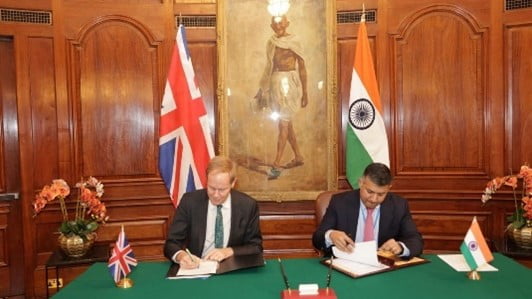
- The Young Professionals Scheme was conceived as part of an India-U.K. The Migration and Mobility MoU signed in May 2021, was announced in November at the G20 summit in Bali.
- The scheme will permit degree-holding citizens aged between 18 and 30 to live and work in each other’s countries for a period of two years.
- They would be able to either work, study, or visit, for two years.
- The scheme will run for a period of three years initially.
- The scheme allows for exchange visas for up to 3,000 individuals per year.
- It isn’t even necessary for an applicant to have a job in hand when he/she applies for the visa.
- So, the successful candidates could look for a job, educational or cultural opportunity once they arrived in their host country or they could just visit.
Source: The Hindu
Syllabus
- Prelims – History and Art and Culture
Context: A recent excavation at Juna Khatiya village of Kutch district Gujarat has revealed some new findings on burial practice of Harrapan and early Harrapan times.
- Juna Khatiya village is a biggest cemetery of Harappan era. It has around 500 graves from 3,200 BCE to 2,600 BCE era.
Important findings from the Juna Khatiya village:
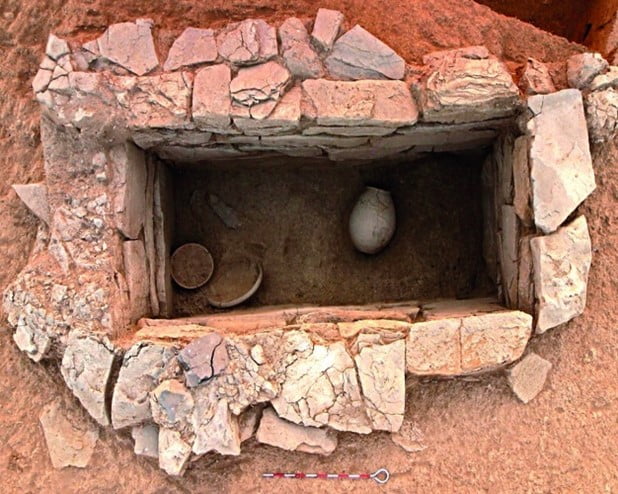
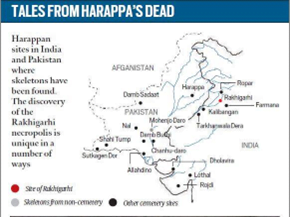
- Burial structures, secondary memorials, cremation sites and pot burials.
- Burial structures shapes vary from rectangular to oval or circular.
- Rows of graves with- skeletal remains, ceramic pots, plates and vases, beaded jewellery, and animal bones that piqued their interest.
- Region demonstrates transition from earth-mound burials to stone graves.
- Pottery have features and style similar to early Harappan sites in Sindh and Baluchistan.
- Rectangular graves were made of shale and sandstone, common rocks in the region.
- They were cut into natural soil without stone facings.
- Construction of cemetery: Pebbles of local rock, basalt, soil, sand, etc were used and clay was used to bind them together.
- Items like clay bowls and dishes, prized possessions like beads and bangles of terracotta, seashells, and lapis lazuli were placed with dead.
- Majority of burial pits had five to six pots.
- There is no metal artefact found.
- Some of burial structures have boulders of basalt as coverings.
- In few cemeteries bases of the pits have stone paving too.
- Bases of some pits are lined with soil that is different in colour and texture from other layers.
- Burials were oriented in different directions – some are along east-west axis, some along north- south orientation.
Significance of findings in Juna Khatiya village:
- Juna Khatiya can help in understanding cultural exchange between the Sindh and Gujarat regions in Early Harappan period due to the similar artefacts and customs.
Burial practices of Harappan/Indus Valley Civilization:
- Specific individuals, communities, and societies had their own methods of burial which suggests religious and cultural diversity.
Three types of burial customs:
- Complete burial of intact bodies.
- Full cremation with burial of bones or ashes- most common.
- Partial burials containing only the bones of the deceased.
- Mohenjo-daro: Most cremation urns did not contain human bone remains, but ornaments possessed during life, animal bones, ash and charcoal were found.
- Majority of corpses were mummified in the act of death, as opposed to being disposed of later.
- Only few populations were buried formally in ground, which means those people enjoyed some important status in society.
- Rakhigarhi (Haryana): Most of the burial pits were rectangular in shape, with vertically cut sides and flat bottoms.
- They were generally arranged on the north-south axis with the head to the north.
- Graves were humble in nature with exotic items like- inscribed seals or ritual objects.
- High ranking individuals, including women were buried wherein the soil had been built up with pots upon which the body was laid.
- These graves tended to be laid with bricks.
- Many votive pots in male graves indicates women were not considered equal to male citizens.
Source: Times of India
Previous Year Questions
Q.1) According to Kautilya’s Arthashastra, which of the following are correct?
- A person could be a slave as a result of a judicial punishment.
- If a female slave bore her master a son, she was legally free.
- If a son born to a female slave was fathered by her master, the son was entitled to the legal status of the master’s son.
Which of the statements given above are correct? (2022)
- 1 and 2 only
- 2 and 3 only
- 1 and 3 only
- 1, 2 and 3
Q.2) Which one of the following ancient towns is well known for its elaborate system of water harvesting and management by building a series of dams and channelising water into connected reservoirs? (2021)
- Dholavira
- Kalibangan
- Rakhigarhi
- Ropar
Syllabus
- Prelims – Science and technology
Context: Recently, a defunct NASA satellite Earth Radiation Budget Satellite (ERBS) has fallen back to Earth after 38 years orbiting Earth.
About Earth Radiation Budget Satellite:

- It was launched in 1984 from space shuttle Challenger.
- It was part of NASA’s three-satellite Earth Radiation Budget Experiment (ERBE) mission.
- It carried three instruments to measure– Earth’s radiative energy budget and stratospheric constituents that includes ozone.
- The ERBS was designed to investigate how energy from the Sun is absorbed and re-radiated by the Earth.
- Understanding this process helps reveal patterns in Earth’s weather.
- Until 2005, data from ERBS helped researchers investigate how Earth absorbed and radiated energy from the Sun.
- It measured ozone, water vapor, nitrogen dioxide and aerosol concentrations in the Earth’s stratosphere.
- An instrument on ERBS, Stratospheric Aerosol and Gas Experiment II (SAGE II), collected data that found that ozone layer was declining on a global scale.
- This helped to create Montreal Protocol Agreement, an international agreement signed in 1987 that resulted in a decreased use of ozone-destroying chlorofluorocarbons (CFCs).
- Its observations helped researchers measure effects of human activities on Earth’s radiation balance.
Source: Indian Express
Previous Year Questions
Q.1) If a major solar storm (solar flare) reaches the Earth, which of the following are the possible effects on the Earth? (2022)
- GPS and navigation systems could fail.
- Tsunamis could occur at equatorial regions.
- Power grids could be damaged.
- Intense auroras could occur over much of the Earth.
- Forest fires could take place over much of the planet.
- Orbits of the satellites could be disturbed.
- Shortwave radio communication of the aircraft flying over polar regions could be interrupted.
Select the correct answer using the code given below:
- 1, 2, 4 and 5 only
- 2, 3, 5, 6 and 7 only
- 1, 3, 4, 6 and 7 only
- 1, 2, 3, 4, 5, 6 and 7
Syllabus
- Prelims – Art and culture
Ottanthullal:
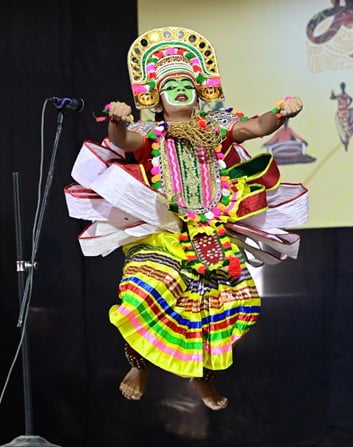
- Ottanthullal (or Thullal, in short) is recite-and-dance art-form of Kerala
- It is famous for its humour and social satire, and marked by its simplicity as opposed to more complex dance-forms like Kathakali and Koodiyattam.
- Strictly follows principles of Natya Shastra written by Bharatmuni.
- It is performed solo and is conducted during temple festivals from temple premises.
- The songs are very fast and are written in Malayalam.
- Along with the dancer, there is also a singer who repeats the slokas.
- The musical instruments used are Mridangam, Elathalam, Maddalam.
- The performer is called Thullalkaran
- A great Malayalam poet called Kunchan Nambiyar introduced Thullal in the 18th century.
- The makeup is like Kathakali.
Source: The hindu
Previous Year Question
Q.1) With reference to the famous Sattriya dance, consider the following statements: (2014)
- Sattriya is a combination of music, dance and drama.
- It is a centuries-old living tradition of Vaishnavites of Assam.
- It is based on classical Ragas and Talas of devotional songs composed by Tulsidas, Kabir and Mirabai.
Which of the statements above is/are correct?
- 1 only
- 1 and 2 only
- 2 and 3 only
- 1, 2 and 3
Syllabus
- Prelims – Governance
In News: Prime Minister Narendra Modi launched the government’s Aspirational Block Programme (ABP), The ABP was launched during the 2nd National Conference of Chief Secretaries
Aspirational Block Programme (ABP):
Aim:
- Improving performance of blocks lagging on various development parameters.
- Development of both physical and social infrastructure along with a focus on the enhancement of cyber security.
About:
- The Aspirational Blocks Programme is on the lines of the Aspirational District Programme.
- It was announced in the Union Budget 2022-23.
- The programme will cover 500 districts across 31 states and Union Territories initially.
- Over half of these blocks are in 6 states—Uttar Pradesh, Bihar, Madhya Pradesh, Jharkhand, Odisha and West Bengal.
Aspirational District Programme (ADP):
- Launched in 2018
- It aims to quickly and effectively transform 112 most under-developed districts across the country.
- The program is anchored by NITI Aayog at the Government of India level.
- The broad contours of the programme are Convergence (of Central & State Schemes), Collaboration (of Central, State level Nodal Officers & District Collectors), and Competition among districts through monthly delta ranking; all driven by a mass movement.
- With States as the main drivers, this program focuses on the strength of each district, identifying low-hanging fruits for immediate improvement and measuring progress by ranking districts on a monthly basis.
- The ranking is based on the incremental progress made across 49 Key Performance Indicators (KPIs) under 5 broad socio-economic themes – Health & Nutrition, Education, Agriculture & Water Resources, Financial Inclusion & Skill Development and Infrastructure.
- Champions of Change Dashboard is used for rankings.
- The Government is committed to raising the living standards of its citizens and ensuring inclusive growth for all – “Sabka Saath Sabka Vikas aur Sabka Vishwas”.
- The Aspirational Districts Programme essentially is aimed at localizing Sustainable Development Goals, leading to the progress of the nation.
Source: Indian express
Previous Year Question
Q.1) The endeavour of ‘Janani Suraksha Yojana’ Programme is (2012)
- to promote institutional deliveries
- to provide monetary assistance to the mother to meet the cost of delivery.
- to provide for wage loss due to pregnancy and confinement
Which of the statements given above is/are correct?
- 1 and 2 only
- 2 only
- 3 only
- 1, 2 and 3
Syllabus
- Prelims – Economy
In News: Public hearing on the environment clearance (EC) for Mali Parbat Bauxite Mining by Hindalco Industries in Korapaut on January 7, 2023 was presided over by the district judicial officer.
- Around 2,000 people from the local communities attended the hearing on January 7 and 80-90 of them raised objections to granting EC to Hindalco. Around 90 per cent of the people from the local communities opposed the EC.
Mali Parbat Bauxite mine:
- It is located in Pottangi tehsil of Koraput district of Odisha.
- The bauxite mined out from the Maliparbat mine will be used in existing Hindalco’s Alumina refineries located at Renukoot (Uttar Pradesh), Muri (Jharkhand) & Belgaum (Karnataka).
- Some rivers near the mine are Kukurhaghat Nala, Kunduli Nala and Kolab River.
- Hindalco Industries is one of the leading producers of aluminium in the country. The company business involves bauxite mining to alumina refining.
- Hindalco Industries was granted EC for an area of 268.110 hectares of Maliparbat bauxite mine in 2006.
Bauxite mining in India:

- India is rich in bauxite reserves – 3,896 million tonnes as in 2015.
- About 77% resources are of Metallurgical grade.
- There were 157 reporting mines in 2016-17 out of which 56 are major mines.
- The share of Public Sector mines was about 31 % of the total production in 2016-17
- Many indigenous and tribal people live near the mines, which shows the quantity of bauxite in India.
What is Bauxite?
- The raw material of aluminium is known as bauxite ore.
- It is generally found in the region close to laterite rocks.
- Laterite rocks are commonly found in the peninsular and coastal regions – plateaus and hill ranges.
Uses of bauxite ore:
- Bauxite is used as a primary ingredient in making aluminium – It consists of 80% of bauxite. It is used to convert into aluminium and make aluminium products.
- It is also used as a corrector. In the case of any dent or damage, bauxite ore is used in the steel industry to repair the damage.
- Bauxite is also used in the industries of rubber, water purifying machines, plastic, paper making, etc.
The distribution of Bauxite ore in India :
- Bauxite ore is mainly found in the peninsular, coastal and hill ranges.
- Odisha (51%)
- Andhra Pradesh (16%)
- Gujarat (9%)
- Jharkhand (6%)
- Maharashtra (5%)
- Chhattisgarh
- Tamil Nadu
- Madhya Pradesh
- Odisha is the largest bauxite ore-producing state.
- The popular mines of bauxite lie in Odisha’s districts of Sambalpur, Kalahandi, Sundargarh etc.
- There are two famous bauxite ore mines in Odisha – Panchpatmali mines and Gandha Mardan
Source: DTE
Syllabus
- Prelims – Indian Culture
In News: On her 192nd birth anniversary in 2022, Fatima Shaikh was honoured with a Google Doodle on her birthday.
Fatima Sheikh:
- She was a pioneering teacher, anti-caste activist, proponent of girls’ education, and social reformer in 19th century Maharashtra.
- She befriended Savitribai Phule when the two were enrolled in a teachers’ training programme by American missionary Cynthia Farrar.
- While in the programme, both developed a bond over their politics and mission to educate those who had been traditionally denied knowledge and education.
- She was a pioneering figure whose life, at a time when regressive attitudes towards women and bahujans pervaded society, is a testimony to her courage.
- No surviving documents of Fatima Sheikh are available today.
Contributions:
- In 1848, she started the first girls’ school in the country, along with Savitribai and Jyotirao Phule, amidst loud, threatening opposition.
- The school was opened inside the premises of Fatima’s home in Pune.
- Other schools for Dalits and women followed, with Fatima and Savitribai going to individual families across the town in attempts to persuade them into enrolling their children.
- As many from their own community abandoned them, Fatima Sheikh and her brother stood strongly with the Phules and the mission to educate girls and bahujans.
Hardships:
- The two women would often have stones and pieces of dung thrown at them while walking in the streets.
- Fatima specifically is said to have borne the wrath of both upper-caste Hindus and orthodox Muslims.
- Under pressure from upper castes, Jyotirao’s father evicted Savitribai and Jyotirao from the family home in the late 1840s. With nowhere else to go, the Phules would find shelter at the house of Mian Usman Sheikh, where they would live till 1856.
MUST READ Savitribai Phule
Source Indian express
Syllabus
- Mains – GS 3 (Economy)
Context: There is an urgent need to scale up alternative approaches of farming since, the negative impact of the Green Revolution has been heightened further by the pandemic. Natural farming needs to be practised on scale and in areas that do not impact food security. However, the natural farming in India has persistent uncertainties, making it an emotive issue.
About Natural Farming:
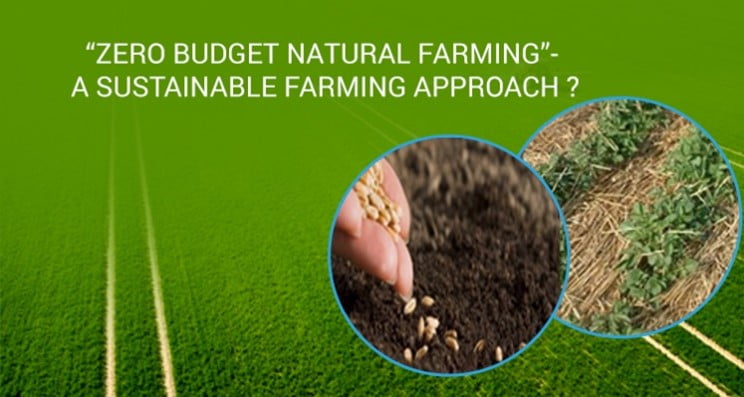
- It was introduced by Masanobu Fukuoka, a Japanese farmer and philosopher, in his 1975 book The One-Straw Revolution.
- Natural farming is a method of chemical-free agriculture drawing from traditional Indian practices.
- It is a unique model that relies on Agro-ecology aiming to bring down the cost of production and boost the return to a sustainable level.
Features of Natural Farming:
- Chemical Free: Natural farming refers to the type of agriculture in which the use of chemicals like pesticides, fertilisers, growth regulators, food additives, genetically modified organisms are entirely shunned.
- Use of Alternatives Systems: In place of chemical based inputs, natural farming utilises methods like crop rotation, use of green manures and compost, biological pest control and mechanical cultivation.
- Additional Practices: Natural farming systems can be complemented with practices like crop rotation (planting different crops sequentially), mulching (see inset), intercropping (planting different crops simultaneously in a field) and seed soaking with liquid manure, to increase the yields in a field.
Impact of Green Revolution on Agriculture:
- India’s Green Revolution in the 1960s was based on high-yielding varieties, irrigation and fertilisers.
- The Green Revolution transformed India from a ‘ship-to-mouth’ existence, through the American PL-480 food grants, to a food-secure, Agri-exporting nation.
- India moved into a different realm and created a huge stability and resilience.
- Hence, it is time to look back at the past and prevailing successful examples and stop being diffident.
Significance of Natural Farming:
- Soil Health: Natural farming leads to better soil health as it does not deplete the macro-nutrients (nitrogen, phosphorus and potassium) and micro-nutrients (iron, manganese, zinc and copper), organic carbon as well as rhizosphere microbiome in the soil, unlike the conventional chemical-based practices.
- Environment: Natural farming leads to lesser carbon emissions, in addition to promoting carbon sequestration. It also promotes soil respiration, growth of beneficial organisms like earthworms, soil enzymes and microbial biomass increase.
- Crop Yield: Natural farming is more productive as compared to chemical-based farming.
- Reduction in the Costs: As the inputs are produced by the farmers on the farm itself, the costs would be decreased substantially.
- Water-use efficiency: Use of natural methods of farming leads to more efficient use of soil moisture, leading to an increase in the levels of water table, prevents over-extraction of groundwater and promotes aquifer recharge.
- Food Quality: It promotes the growth of nutrient content and improves the physical attributes of vegetables like tomato, cabbage and cowpea, fetching better prices in the market.
- Income and Livelihood: This approach not only leads to minimise cost of cultivation (as inputs are produced on-field), it also fetches a premium price for the produce.
Challenges to Natural Farming:
- Yields drop: India’s first organic state, Sikkim, has started seeing decline in its yields after a few years.
- Conviction among Policy Makers: As of now, policy makers fear for the food security of the nation and are non-committal on any major changes in the agriculture sector.
- Resistance by the Chemical inputs-based industry: The chemical-based farming has a strong backing in the form of multi-million dollar agro-chemical industry, which has fought tooth and nail to sustain the application of chemicals in agriculture.
- Lack of Consensus among the Scientific community: Though agreeing to its health and environmental benefits, the scientific community is divided on the impact of natural agriculture on crop yields.
Government Initiatives to promote Natural farming:
- Policy on Organic Farming 2005: The policy was launched in 2005 under the aegis of the Ministry of Agriculture and Farmers’ Welfare.
- It seeks to promote organic farming and conserve bio-resources, resulting in strengthening of rural economy, promotion of value addition, sustaining soil fertility and accelerating growth of agri-businesses in the country.
- Paramparagat Krishi Vikas Yojana: It is a sub-component of Soil Health Management under National Mission of Sustainable Agriculture.
- It primarily aims at developing healthy agriculture models through a mix of traditional wisdom and modern scientific advancements. It also seeks to promote soil fertility build-up, resource conservation and climate change mitigation
- Mass movement: Recently, the PM of India has made an appeal to the farmers of the nation, to make organic farming a mass movement in the country.
Suggestive measures to scale up Natural farming:
- Promoting in tribal and rain fed areas: Rain-fed and tribal areas which are still not Agri-input intensive, producing nutri-cereals, pulses and oilseeds are the ideal places to begin with.
- Productivity of these areas must be stabilised and improvised as nearly 55 per cent of the net sown area is rain-fed and 61 per cent of our farmers inhabit these areas.
- Promoting natural farming in rainfed areas beyond the Gangetic basin: Home to half of India’s farmers, rainfed regions use only a third of the fertilisers per hectare compared to the areas where irrigation is prevalent.
- The farmers stand to gain as the current crop yields in these areas are low.
- Securing insurance of organic farmers: Enable automatic enrolment of farmers transitioning to chemical-free farming into the government’s crop insurance scheme, PM Fasal Bima Yojana (PMFBY).
- Any transition in agriculture: Crop diversification, change in farming practices adds to the farmer’s risk. Covering such risks could enhance the appetite of the farmers to embark on the transition.
- Promote microenterprises that produce inputs for chemical-free agriculture: Lack of readily available natural inputs acts as a barrier for farmers. For this setting up of village-level input preparation and sales shops can be explored.
- Leverage NGOs and champion farmers: For promoting and practising sustainable agriculture across the country, at least five million farmers are already practising some form of sustainable agriculture and hundreds of NGOs are involved in promoting them.
Source: The Hindu
Syllabus
- Mains – GS 2 Governance, GS 4 Probity in Governance
In News: In a judgment in 2022 — Neeraj Dutta v. State (Govt. of NCT of Delhi) — the Constitution Bench of the Supreme Court came down heavily on corruption among public servants in the country and lowered the bar for the quantum of evidence required to convict persons charged with corruption.
Context:
- But despite its unequivocal stand, the extent of corruption in public life remains undiminished.
- Transparency International says seven out of 10 people pay bribes to access public services.
- It is well known that some powerful people are accused of ‘buying’ prosecution witnesses. Some lawyers have also been part of this, bringing shame to the criminal justice system and to the bar. Hence, the apex court comes with the following ruling
Significance of the ruling:
- Through its ruling, the Supreme Court debunks the myth that absolute and conlusive proof of guilt alone can help convict an offender.
- the Supreme Court has set the standard of ‘preponderance of probability’, in criminal trials.
- Basically, the court has now laid down that even if prosecution witnesses turn hostile, a conviction would be in order if all the circumstantial evidence marshalled by the prosecution and produced before the court points unmistakably to the guilt of the accused.
- The court has directed that infirmities such as non-availability of the complainant, either because he is dead or otherwise not traceable, should not stand in the way of accepting the story of the prosecution.
- This is a great step towards ensuring integrity in public services, especially in the ‘superior’ services such as the Indian Administrative Service and Indian Police Service.
- Since deterrence works only up to a point and increase in penalties for criminal behaviour also increases the quantum of proof required by the courts to be convinced of the guilt of those arraigned before them.
- The same liberal application of the law of evidence will now apply to cases where prosecution witnesses turn hostile, either because of inducement or intimidation.
Forms of corruption:
- Bribes to public servants
- Nexus between offender and victim
- Political corruption – illegal and rapacious demands from the political hierarchy as one of the reason for such bribes.
- Jobs are often sold at a price – many applicants are prepared to pay without a complaint as there is acute unemployment.
- No approval for construction of a building or for registration of a property is possible without payment of a bribe.
- Corrupt officials in the administration are willing conduits and avail themselves of the opportunity to line their pockets.
Causes of corruption:
- Personal factors
- Self-seeking human nature including feeling of income injustice, urge to create benefit, etc.
- Erosion of moral values shape individual psychology so that the act of corruption can be internally justified and normalised.
- Personal growth aspirations such as rank obsession, favourtisism,
- Structural factors
- Bureaucratic traditions – including decisions pertaining to resource use and implementation.
- Centralisation – leads to institutionalisation of corruption
- Ways of sharing authorization – civil servant’s decision making methods are determined within the programming of functions and decisions of the institution.
- Discretionary power diminishes, while bureaucratic supervision power increases, which can lead to corruption
- Political factors
- Politicisation of bureaucracy – means that civil servants are a part of the
policies of the government that comes to power. It includes appointments, promotions based on favouritism and favours.
- Personalization of power
- Social factors
- Lack of education
- Insufficiency in civil community
Challenges of corruption on public administration:
- Ineffectiveness of Public Administration – weakens governance and blocks stability and continuity in public services
- Damaging the State of Law Understanding – Corrupt civil servants abuse their duties instead of obeying the rules
- High Cost of Public Administration – bribes have turned into a second payment
- Political instability such as transitions to a newly elected government
- Lack of rule of law legal system is unable to provide sanctions for officials that engage in corruption
- Erosion of Social capital i.e. shared values and understandings in society that enable individuals and groups to trust each other and so work together (OECD).
- Frequency of Conflicts of interest: a conflict between the public duty and private interest of public officials that could improperly influence the performance of their official duties and responsibilities (OECD)
Fighting corruption:
- Severity of the law and its application such as in the recent Supreme court ruling
- Strength of public opinion that would help carry forward the campaign for a clean public life.
- Greater public awareness about how corruption is gnawing away the vitals of society and affecting its governance system.
- Particularly when corruption is not just limited to high-level politicians but extends to every nook and corner of the governance system.
- Greater transparency in governance systems.
- Civil society and the media can play a critical role in bringing about this change.
- The Centre for Science and Environment is working on a project to publicly rate the environmental performance of Indian firms.
- Participation of the public in government policies and programmes at the gram sabha level – that is, in an open meeting of all village adults – rather than in a closed meeting of the gram panchayat – that is, the council of village elected representatives
- In 1977, Rajasthan government’ antyodaya project to identify five poorest families in the village for government support, the patwari would consult the panchayat leaders and they would normally get their kin or henchmen included in the list.
- Corruption has to become an important issue in primary and secondary education in order to deal with those cultural aspects that engender the phenomenon.
- A respect for state regulations and state property and for the poor and marginalised must be to inculcated from childhood.
Way forward:
The latest Supreme Court judgment may not deter people from corruption. However, that is no reason for us to give up the fight. It is here that we need enlightened opinion leaders who are not scared of taking on powerful elements in politics or in administration.
Source: The hindu
Baba’s Explainer – Geospatial Policy
Syllabus
- GS-2: Government policies and interventions for development in various sectors and issues arising out of their design and implementation.
- GS-3: Indian Economy
Context: The government notified the 2022 National Geospatial Policy on December 28, 2022, for implementation with immediate effect.
Read Complete Details on Geospatial Policy
Practice MCQs
Q.1) With reference to India's culture and tradition, what is ` Ottanthullal'?
- It is an ancient Bhakti cult of Shaivism still prevalent in some parts of South India
- It is an ancient style bronze and brasswork still found in southern part of Coromandel area
- It is a recite-and-dance art-form of Kerala filled with humour and satire
- It is an ancient martial art and a living tradition in some parts of South India
Q.2) With reference to ‘Aspirational Blocks Programme’, consider the following statements?
- It was launched in 2018, spearheaded by NITI Aayog
- It is applicable on all the blocks and districts of the country .
Which of the following statements are correct?
- 1 only
- 2 only
- Both 1 and 2
- Neither 1 nor 2
Q.3) Consider the following statements regarding Earth Radiation Budget Satellite (ERBS):
- It was part of NASA’s three-satellite ERBE mission.
- The ERBS was designed to investigate how energy from the Sun is absorbed and re-radiated by the Earth.
- An instrument on ERBS, Stratospheric Aerosol and Gas Experiment II (SAGE II), collected data that found that ozone layer was declining on a global scale.
Which of the statements given above are correct?
- 1 and 2 only
- 2 and 3 only
- 1 and 3 only
- 1 2 and 3
Comment the answers to the above questions in the comment section below!!
ANSWERS FOR ’ 11th January 2023 – Daily Practice MCQs’ will be updated along with tomorrow’s Daily Current Affairs.st
ANSWERS FOR 10th January - Daily Practice MCQs
Q.1) – d
Q.2) – d
Q.3) – b














